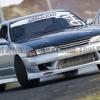R32 Gtst Project
Announcements
-
Similar Content
-
Latest Posts
-
I was chatting with an ex SAU person who is involved in chooning euros now. He was saying the factory cars like Audi VW etc have something like 2000 tables that the ECU uses for getting everything "just right". Compare that back to any aftermarket ECU, and you'd be hard pressed to surpass 50 lookup tables. Even the Ford Barra engine has a few hundred lookup tables to run it (and they're still working some tables out too!)
-
Grab a temp probe, and probe each exhaust inlet runner with it sitting idling. Each one should be pretty darn close to the same temp. If you've got some reading higher or lower than the others, it's likely either air flow isn't equal, or your injectors aren't equal to each other. The other things to check, is from the wiring changes that were made, were any earth's or grounds moved/changed. Lastly, for the strut brace issue. It's not perfect, but can you get away with slipping a washer or two under the strut brace to raise it, and it still clean the bonnet? If you can, work out the height you need, that the motor can't torque up into, and get a spacer made for each side.
-
That rusty R32 fuel tank is what we found in Clinton's R32. It has since been replaced with a R32 GTR tank and all it took was a bit of ingenuity in building new fuel tank hangers. I cannot believe how simple the R32 fuel level sender is compared to the R33 unit.
-
By soviet_merlin · Posted
Right, I see what you mean now. Mounting the fuel pump bare in the bottom of the tank without its box does look quite questionable: Compared to using the OEM box for the pump: Just for the record, these are the videos on the hanger and surge tank systems. He explains it quite well. -
I think, given the other pictures of same on the FPG site, that that is their tame R32 tank with a hole cut in the side used for dev purposes, and the rust is a non-consequential surface finish.
-









Recommended Posts
Create an account or sign in to comment
You need to be a member in order to leave a comment
Create an account
Sign up for a new account in our community. It's easy!
Register a new accountSign in
Already have an account? Sign in here.
Sign In Now